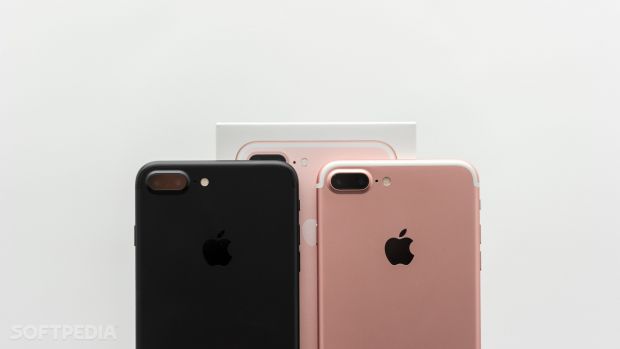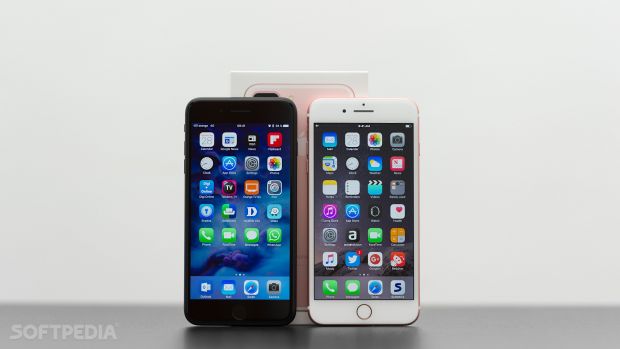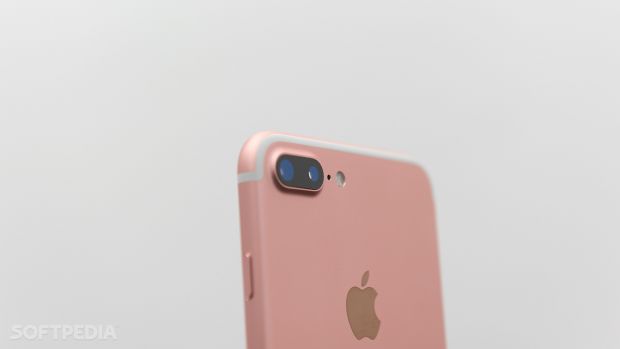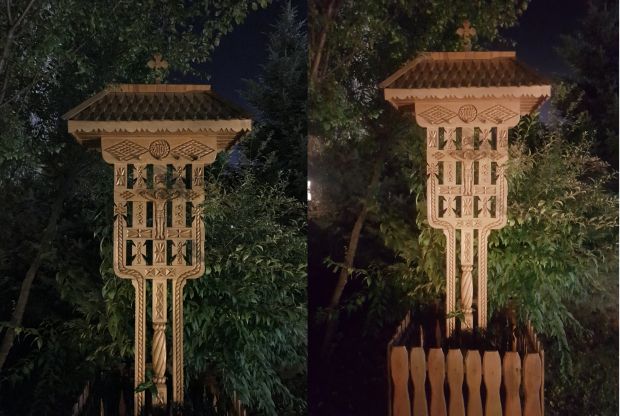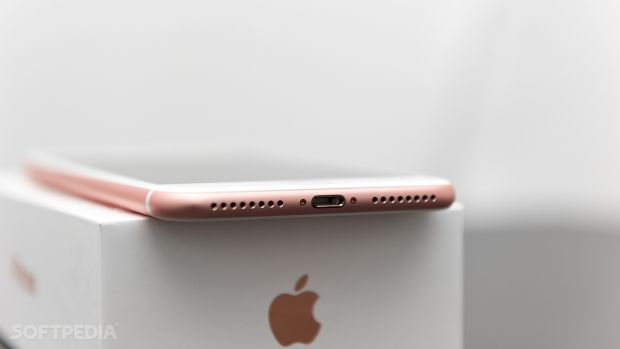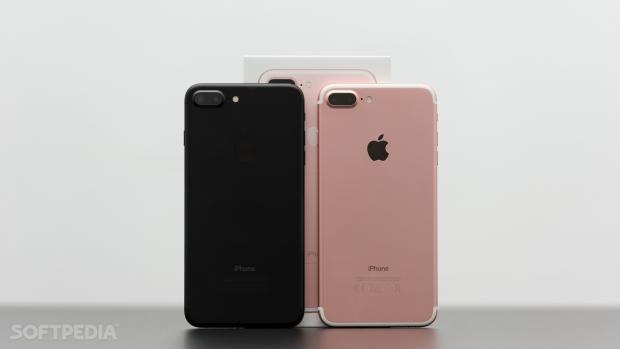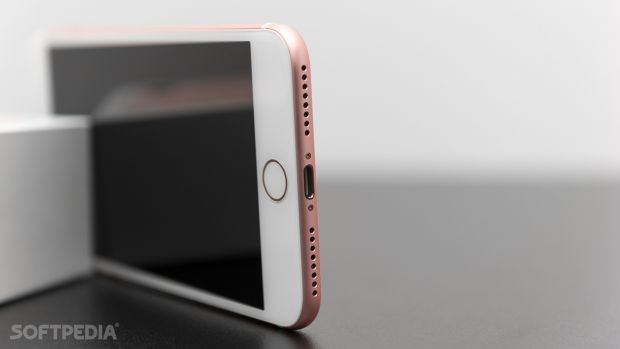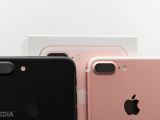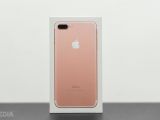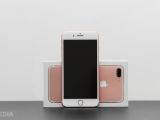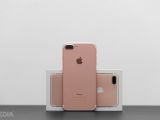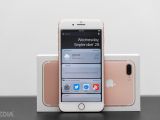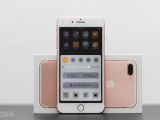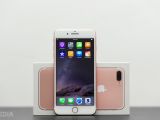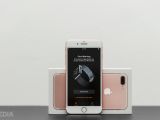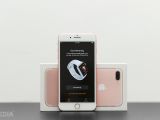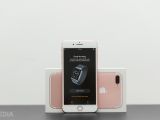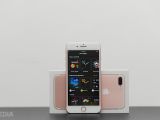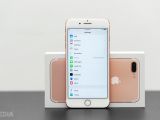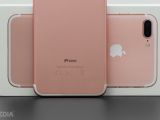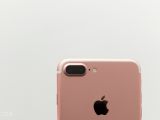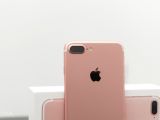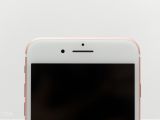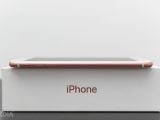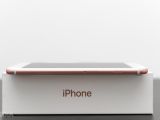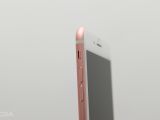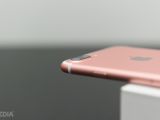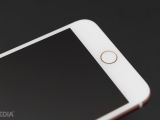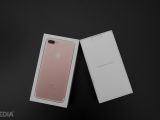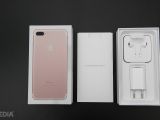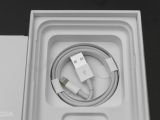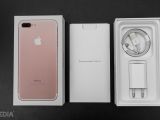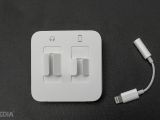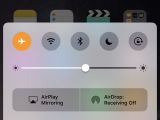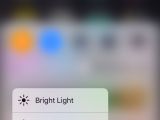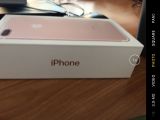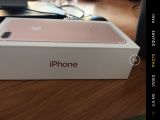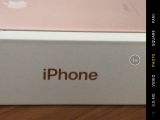| INTRODUCTION |
|---|
| #1. DESIGN | #6. iOS10 |
| #2. HARDWARE | #7. BATTERY LIFE |
| #3. DUAL CAMERAS | #8. NEW COLORS |
| #4. HEADPHONE JACK | #9. STEREO SPEAKERS |
| #5. WATERPROOFING | #10. THE LITTLE THINGS |
| CONCLUSION |
|---|
September 7. This was the day when Apple finally took the wraps off its new iPhone generation after several months full of controversy, mostly fueled by leaks that pointed to the changes Cupertino planned for its flagship product.
And truth be told, many of the changes that showed up in leaks earlier this year made their way onto the iPhone 7, and this is why we now have a phone without a headphone jack and a secondary speaker grille that hides virtually… nothing.
Leaving aside all the criticism, the iPhone 7 is here and Apple launched it with much fanfare, describing it as “the best iPhone ever.”
Cupertino obviously praised pretty much every single change that it made on this phone, even those that were highly criticized - as is the case of the headphone jack - and talked about the removal of some options as an act of courage, a thing that Steve Jobs himself described as something that Apple needs to do because of its spirit.
To determine whether the new iPhone is worth all the praises, we took two different models, one in Rose Gold and one in black, to see what they’re up to.
On September 7, Apple broke down the iPhone 7 unveiling into 10 different parts, and we’re going to do the same thing for our review. Read on to find out everything about the new iPhone 7 Plus, including things that nobody has talked about before in other reviews.
#1. The iPhone 7 Plus design
If you've used the bigger iPhone 6 or 6s before, there's nothing to really be excited about when seeing the new iPhone 7 Plus.
As suggested by the majority of the controversial rumors we've mentioned in the introduction, the iPhone 7 Plus looks pretty much the same as its predecessor, with very small changes that are unlikely to impress anyone.
The design is largely the same and the new model even has the same dimensions - 158.2 x 77.9 x 7.3 mm (6.23 x 3.07 x 0.29 inches), but is a little bit lighter - 188 grams versus 192 grams on the 6s Plus.
Visually, the only changes are taking place on the back, with the antenna lines now moved to the top and bottom edges of the phone. One very unexpected detail is that antenna lines are not painted in the same color as the phone, so although one of the models we tested was Rose Gold, the antenna lines were white.
The Plus comes with a dual-camera system that might indeed bring technical improvements (we'll detail that a little bit later), but aesthetically, this approach looks odd, to say the least. The camera bump is meh and we would have rather preferred a design similar to the Nexus 6P where the entire top edge that includes the camera is protruding.
Because of the uninspired camera design, the iPhone 7 Plus looks awkward when sitting on the desk and it's impossible to use it with one hand on a flat surface.
One little detail that very few seem to observe is that the iPhone logo on the back of the phone is now written with a bold font, which helps it stand out quite easily. The same approach is used on the iPhone box, which has also received several tweaks, including a bold font for the iPhone logo.
All in all, there's very little to be excited about when looking at the iPhone 7 Plus and, at first glance, you can hardly find a reason to upgrade from an iPhone 6s Plus. But it's not all about the looks.
#2. The upgraded hardware
Since it's a new generation, it makes sense for the iPhone 7 to come with upgraded hardware, and the Plus model does not disappoint.
Just as expected, the iPhone 7 Plus comes with the Apple A10 Fusion chip which, according to Cupertino itself, is not only more power efficient but also faster and more powerful.
Specifically, the A9 processor available on the 6s plus was a dual-core chip clocked at 1.84 GHz, while on the 7 Plus, Apple went for a quad-core CPU running at 2.23 GHz. This is a worthy upgrade, but you won't notice such a big difference in real-life performance, as iOS 10 is super optimized on the iPhone 6s Plus too - a somewhat noticeable difference can be seen when browsing the web with Safari, as websites seem to load faster, but this could very well be a placebo effect.
Apple has also upgraded the amount of RAM available on the Plus from 2GB to 3GB, which is pretty much a mandatory move given the fact that the new model comes with a dual-camera system and it needs more power to process photos.
“Just as fast as the 6s Plus.”
There are new storage versions, and while the iPhone 6s Plus was previously available with 16, 64, and 128 GB of storage space, the new version comes with 32, 128, and 256 GB. Obviously, there's no microSD card option.
The 5.5-inch display is pretty much the same with the one installed on the 6s Plus, with one big difference: it features wide-color gamut support, which leads to better contrast and perfectly balanced brightness levels. In a market where everyone is moving to AMOLED, Apple seems to continuously find new ways to maximize the potential of LCD screens, and we really don't exaggerate when saying that the iPhone 7 Plus has the best iPhone display ever.
Apple has also replaced the Home button with a touch-sensitive one and there are three pre-defined vibration intensity levels that can be configured in iOS 10. The change was necessary for more effective waterproofing, but also to pave the road for what's believed to be a complete makeover of the iPhone next year when all front-facing parts would be integrated into the display.
While there's no headphone jack, the iPhone 7 Plus comes with stereo speakers, but you won't feel such a big difference and the new model is just as loud as its predecessor. You can read more about this in the dedicated section below.
#3. The dual cameras
The cameras are without a doubt the most important upgrade, especially when talking about the Plus version of the new iPhone lineup.
While aesthetically the dual-camera system looks odd on the iPhone 7 Plus, it does serve its purpose well, even though there are still things to be improved here. But let's take everything one at a time to discuss it.
First and foremost, the specs. The iPhone 6s Plus came with a single-lens 12-megapixel camera with F2.2, 1/3" sensor size, and 1.2 um pixel size. The 7 Plus has been upgraded to two different cameras, with the following specs: the wide-angle camera has F1.8 aperture, while the telephoto lens is F2.8, but offers instead an optical zoom of 2x.
The iPhone 7 Plus is thus one of the first smartphones to offer optical zoom, and although it's just 2x for the time being (10x digital zoom is also offered), this is just the beginning of what could be mobile revolution.
For the moment, however, we've found us rarely using the telephoto lens, and most of the photos were shot with the main sensor that's also available on the smaller 4.7-inch iPhone. So if you don't mind not taking pics with the telephoto lens, you should be OK with the small iPhone too.
The aperture upgrade on the iPhone 7 Plus makes it possible for the new model to shoot better pictures in low light, and this is clearly the biggest upgrade on the new generation. The iPhone 7 Plus finally sees in the dark and offers performance similar to the Samsung Galaxy S7/Note 7 series.
The photos below compare the low-light performance of the Samsung Galaxy Note 7 and the iPhone 7 Plus - notice that the latter also manages to adjust brightness in a very effective manner, although we've noticed that, sometimes, the amount of red isn't properly handled, while the Samsung model uses more yellow. The quad-LED True Tone flash also helps compensate for distorted colors in low-light, but it's better not to use it at all if you want photos to look more natural.
In perfect light conditions, both models shoot stunning photos and the iPhone 7 Plus certainly does not disappoint. The telephoto lens also takes awesome pics when the light is just the right one, but other than that, there's often too much noise, and sharpness seems to be missing entirely.
Software processing continues to be an important part of Apple's photo shooting equation, and this is clearly no surprise. Most of the photos receive several finishing touches, such as automatically adjusted contrast and brightness, and in most of the cases, the result is above the average.
“Better camera, but there's still room for improvements.”
The iPhone 7 Plus also comes with a Portrait mode, currently available in beta versions of iOS 10, which adds a blur effect around the subject for more high-quality shots. More improvements are needed here as well, though, because the amount of blur that it uses is too high and, in some cases, this effect covers the margins of the subject.
The Samsung Galaxy Note 7 integrates a dedicated portrait mode as well, but in this case, options are far more advanced and Apple should really have this in mind for future improvements. The Note 7 lets users take one portrait shot and then decide where to put the focus, either in front or in the background, thus adjusting the position of the blur effect too.
OIS is obviously available, now on the smaller iPhone as well, and so is exposure control and auto HDR. Apple claims that the iPhone uses Sapphire crystal lens cover, but scratch tests have shown that it's actually regular glass that's more or less prone to damage.
Overall, the iPhone 7 Plus shoots the best photos ever in the iPhone lineup, but it's still a little behind Samsung's flagship devices. At the moment, the S7/Note 7 offer the best camera in the smartphone business, but the iPhone 7 Plus certainly isn't far behind.
#4. No headphone jack
Definitely the most controversial change in the iPhone 7 lineup, the removal of the headphone jack turned the new model into a highly criticized device that's nearly impossible to use for listening to music while charging. But again, let's take everything one at a time to see what this is all about.
So Apple decided to remove the headphone jack, and the company claimed it did it for 3 different reasons: the 3.5mm audio port is analog whereas the Lightning port is digital, and it not ony recharges the headphones but also allows you to control music without touching the phone; the need for space inside the phone; and the struggle for getting everything wireless.
To compensate for the removal of the headphone jack, Apple is offering a Lightning set of headphones inside the box, as well as an adapter that converts the traditional analog port to Lightning. And yet, not having a headphone jack is super inconvenient.
Just the other day when I was driving and using Waze for GPS navigation, I realized that talking on the phone behind the wheel is a nightmare. Using a traditional jack headphone set is no longer possible, and given the fact that the phone was connected to the car charger, the Lightning headphones that Apple included in the box could not be used.
In this case, a Bluetooth headset was the only way to go, but it obviously costs extra. And because I didn't have one around, I had no other option than to reject the call. Just because I have an iPhone 7.
#5. Waterproofing
Apple has always been considered the most innovative company in the world, while all the others were followers that adopted its ideas in one form or another. But with the iPhone 7, things are a little bit different, as Apple is now doing the same thing Samsung did earlier this year: waterproofing its phones.
Both iPhone 7 models are IP67 rated, which means that they offer the maximum protection when it comes to liquids and almost the maximum protection against dust.
IP stands for Ingress Protection and the 67 rating shows that the iPhone 7 can survive being submerged for 30 minutes in water with a depth of 1 meter. The Samsung Galaxy S7 and the Note 7 are both rated IP68, but the difference only concerns dust protection, so in terms of waterproofing, they all offer the same level of protection.
“Water resistant, but you'd better stay away from liquids!”
And even though the iPhone 7 is officially water-resistant, you shouldn't expose it to liquids by any means. Apple clearly states that warranty doesn't cover liquid damage unless you have a premium package, so the company doesn't take any risk with it (for what it's worth, Samsung is doing the same thing for the S7 and Note 7 lineup, so it's not just Apple).
In order to waterproof the iPhone, Apple used lots of glue and the iFixIt teardown has shown that the company indeed made some changes that were specifically implemented to keep water away from internal parts. For instance, the SIM tray now has some rubber around its external edges to prevent water from slipping in, while the removal of the physical Home button had the same purpose.
In the end, the iPhone 7 shouldn't be taken into the shower, but water resistance is the kind of feature that's welcome just because it's there. It can prevent damages occurring after small accidents, and it's no longer a huge risk to use it during light rain.
#6. iOS 10
iOS 10 is the new version of Apple's mobile operating system, and it brings several improvements, including new 3D Touch features, widgets, and redesigned notifications.
In terms of exclusive iPhone 7 features, there's not much to be excited about, so in case you've previously used iOS 10 on any other iPhone, it's almost the same boring experience.
The only difference is that you get some extra options to configure the vibration feedback of the Home button - with three different levels - as well as a new Portrait mode for photos, which is only available in beta for the moment, so only those who are participating in the program can give it a try.
Other than that, there are small changes here and there, which are indeed nice and everyone would actually like them, but they remain exclusive to iPhone 7, so the operating system is 99 percent the same as on the iPhone 6s lineup.
#7. Battery life
Since it comes with a dual-camera system and other small upgrades, it makes sense for the new iPhone to feature a bigger battery too, especially because it needs more power to handle these hardware upgrades.
And Apple delivered it, so the iPhone 7 Plus is upgraded from 2750 mAh on the predecessor to 2900 mAh.
In terms of battery life, the iPhone 7 Plus provides almost the same performance as the older model, but with small differences depending on usage patterns. While providing accurate figures is quite difficult given that each buyer uses the phone in a different way, it's worth mentioning that the iPhone 7 Plus provides approximately 28 hours of battery life for the hardcore user and 36 hours with moderate usage.
Charging takes just as much as before and you need approximately 100 minutes to fully recharge the iPhone. There's no fast charging mode and this is quite a drawback, considering that Samsung is already offering it on its flagship. Also, there's no wireless charging, but rumor has it Apple is working on it for the next generation.
#8. The new colors
The iPhone 7 Plus is available in five different colors: Rose Gold, Gold, Silver, Black, Jet Black. The two new colors are Black and Jet Black, but there's a catch.
First and foremost, the Jet Black version is super glossy, and although it might look good, it's extremely prone to scratches. There's a big chance that after a few months of moderate use without a case, the Jet Black gets a more vintage look, despite the fact that it's designed to be ultra durable. What's important, however, is that the Jet Black has excellent grip.
The Black version, on the other hand, doesn't provide the same level of grip, but it's not slippery either. It looks good on the iPhone 7 Plus and gives you the impression that it's smaller, even though we all know this is not the case.
And once again, Apple has decided to keep the antenna lines on the iPhone 7 white/gray and not paint them in the same color as the rest of the phone. On the Rose Gold, the antenna lines don't seem to blend into the rest of the iPhone, and it doesn't make any sense. This affects the overall look of the iPhone, as the gray antenna lines help you realize how big the device actually is.
#9. The stereo speakers
One of the things that Apple claims it has improved on the iPhone 7 and the iPhone 7 Plus is the audio quality of the speakers - and yes, it's the plural here because now there are two of them, as the new model is stereo.
But when upgrading from the iPhone 6s Plus to the iPhone 7 Plus, the difference between the two is almost unnoticeable in terms of speaker performance. The audio quality of the new model is indeed a little higher, but otherwise, the iPhone 7 just as loud as its predecessor.
If you're the type of person who uses the device to watch TV or talk on the phone on speaker while driving, there are big chances that you're going to want the iPhone to be louder, but for the moment, the stereo speakers just don't match our expectations.
#10. The little things that matter
Apple has made some changes that might not be noticed at first glance, but they are certainly a nice touch to an otherwise dull upgrade for so many buyers.
For example, Apple has also overhauled the iPhone 7 box. First of all, the face of the iPhone is no longer on the box, but the back, as Apple wants to make it clear that its new model comes with a dual-camera system - and this makes sense given the fact that there are almost no visual changes to the front side of the phone.
Furthermore, the iPhone branding on the box now uses a bold font, and the same approach is used for the back of the phone too, thus making it a little bit more visible.
“Oh, sweet soft vibrations...”
When you open the box, the phone is no longer the first thing you see, but the user manual which clearly reads "Designed by Apple in California." The phone is just underneath it, probably in an attempt to prevent accidents when the iPhone dropped to the ground when opening the box.
The iPhone picture on the box has the exact same size as the phone, so you can actually see how big the Plus is without opening the box.
Another thing that's worth mentioning is that the SIM tray now uses sealing material for waterproofing and you'll see that when inserting the SIM for activation. There's also a small vibration when toggling between silent and ringer, as well as a secondary speaker grille that doesn't seem to do anything - we tried covering it and still no result in sound quality or level.
The notification screen now vibrates when swiping it down, and this is another pleasant touch, and so does the Home button whenever you touch it.
THE BOTTOM LINE
We've heard lots of people calling the iPhone 7 Plus a dull phone that has nothing to offer over Samsung's flagship products, and many claimed this is the reason Apple's sales are collapsing.
First of all, Apple's sales are not collapsing. The decline experienced this year wasn't a decline in iPhone sales, but a decline in iPhone's growth, so the company's flagship product keeps growing, only that it doesn't do it at the same pace anymore.
Then, the iPhone 7 Plus can only be considered a dull release in terms of visual design, as the phone comes with several upgrades under the hood that make it a worthy investment.
Even if you can't get over its looks, you have to try the iPhone 7 Plus, especially thanks to its camera. The dual-camera system might not be the most revolutionary technology launched so far, but the main lens offers an impressive upgrade over the 6s, so it's exactly what makes the iPhone 7 Plus special. This is what Apple has been aiming for and this is what it achieved.
There are several other important upgrades, including waterproofing and the new Home button, which provides quite a premium feeling to the touch, but in the end, the iPhone 7 Plus seems to be more of a transition model whose sales might not be as big as the ones recorded by predecessors.
But Apple has more or less accepted this because iPhone 7's role might be much more important than it seems: it paves the way for a bigger overhaul coming next year, so the new Home button and the removal of the headphone jack took place now in order to prepare the world for the 2017 iPhone, which will come with a plethora of upgrades, including a new design.
Apple needed such a transition model to make sure that next year's iPhone is successful, so by implementing these controversial changes now, Cupertino has kind of accepted the risk of lower sales.
In the end, the iPhone 7 Plus is a worthy upgrade if you can afford it, but other than that, you're not going to lose too much if you stick with the iPhone 6s Plus.
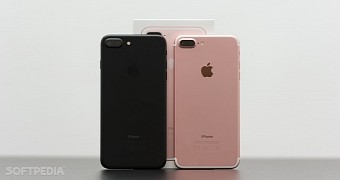
 14 DAY TRIAL //
14 DAY TRIAL // 